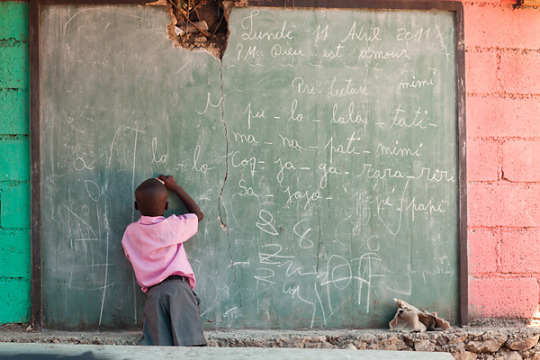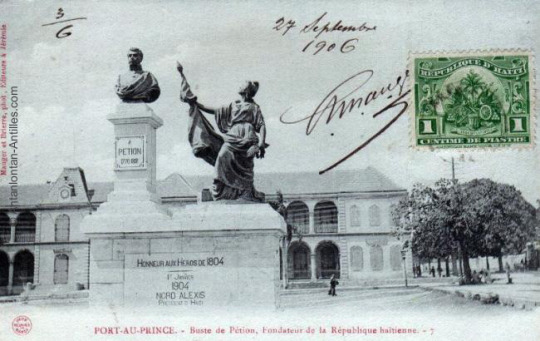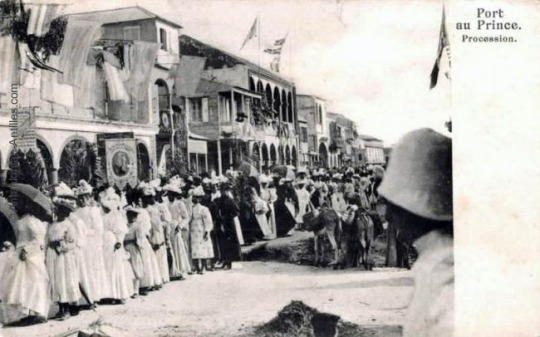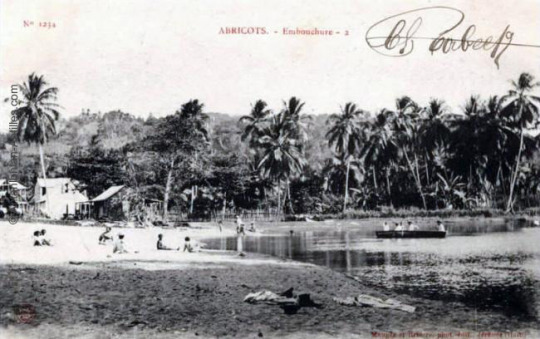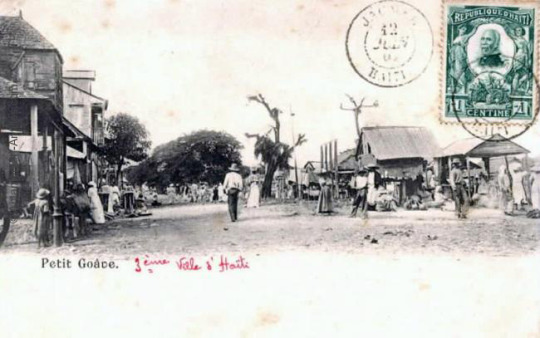Mystical. Sacred. Common. Profane. Beautiful. Mundane. Extraordinary. Captivating. Ayiti.
Don't wanna be here? Send us removal request.
Link
11 notes
·
View notes
Photo
Danballah Wedo
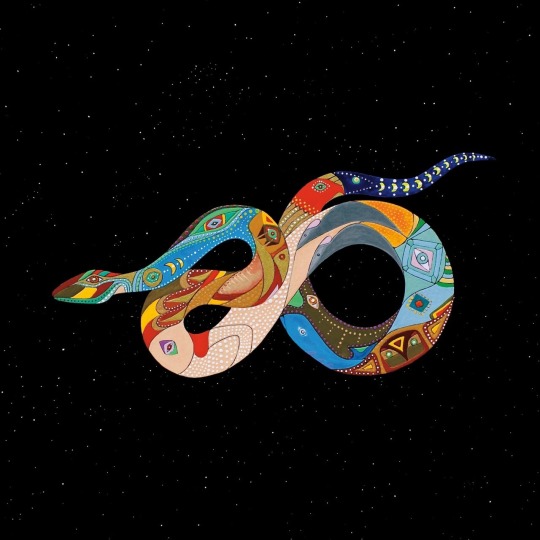
The Rainbow Serpent
2K notes
·
View notes
Video
youtube
25 notes
·
View notes
Photo
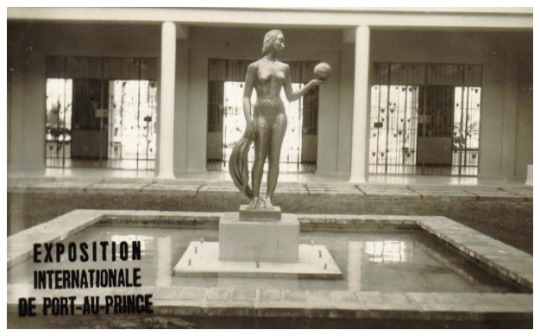
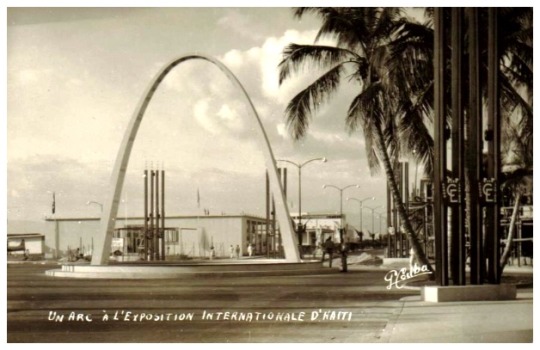
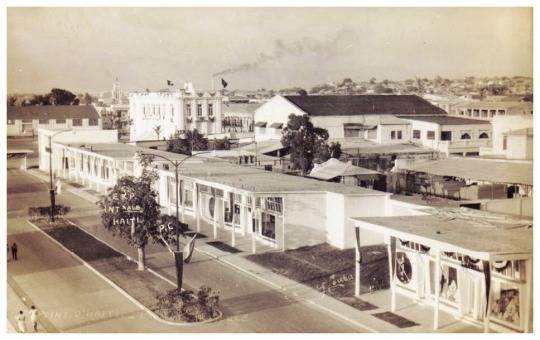
Expo Port-au-Prince 1949
The Exposition internationale du bicentenaire de Port-au-Prince was a world’s fair held in Port-au-Prince, Haiti in 1949 to mark 200 years since Port-au-Prince’s foundation.
54 notes
·
View notes
Photo


America’s Forgotten Black Cowboys
Like many people, Jim Austin - a college-educated, 45-year-old businessman - hadn’t heard about the black presence in the Old West.
The discovery inspired him and his wife Gloria to set up the National Multicultural Western Heritage Museum in Fort Worth, Texas. It pays tribute to some of the forgotten black cowboys - men like Bill Pickett, a champion rodeo rider who invented bulldogging, a technique where he would jump from a horse on to a steer and take the animal down by biting on its lip.
“The kids who are learning history in our schools are not being told the truth about they way the West was,” says Austin.
“I bet you nine out of 10 people in this country think that cowboys were all white - as I did.”
In the real Old West, as opposed to the film depiction, black cowboys were a common sight.
“Black cowboys often had the job of breaking horses that hadn’t been ridden much,” says Mike Searles, a retired professor of history at Augusta State University. His students knew him as Cowboy Mike because he gave lectures dressed in spurs, chaps and a ten-gallon hat.
“Black cowboys were also chuck wagon cooks, and they were known for being songsters - helping the cattle stay calm,” he says.
Searles says his research, which included poring over interviews with ex-slaves in the 1930s, suggested black cowboys benefited from what he calls “range equality”.
“As a cowboy you had to have a degree of independence,” he says. “You could not have an overseer, they had to go on horseback and they may be gone for days.”
from America’s Forgotten Black Cowboys, BBC News, March, 22, 2013
2K notes
·
View notes
Quote
If you know I have a history, you will respect me.
Those who assume that a people have no history worth mentioning are likely to believe they have no humanity worth defending.
-Black Indians: A Hidden Heritage, William Loren Katz. (p. 10)
745 notes
·
View notes
Photo



Expo Port-au-Prince 1949
The Exposition internationale du bicentenaire de Port-au-Prince was a world’s fair held in Port-au-Prince, Haiti in 1949 to mark 200 years since Port-au-Prince’s foundation.
54 notes
·
View notes
Photo



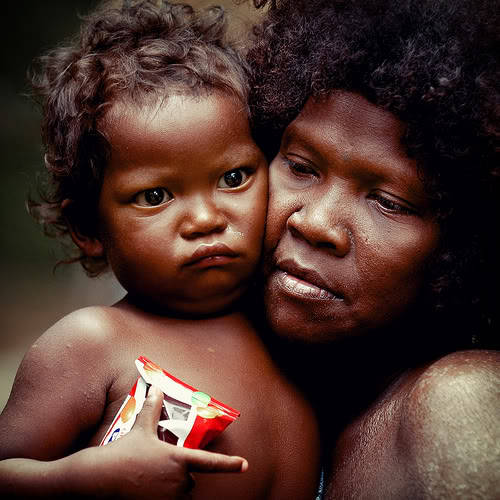



Who is Black? Striking Images of the World’s Dark-Skinned People Inaccurately Considered Non-Black
1. “Black Arab” may be a confusing concept to many people in the West, where Arabs are classified as Caucasian people. However, all uses of the word “Arab” prior to the rise of Islam in the 7th century refer specifically to people belonging to the Bedouin ethnic group. After that and leading up to the 13th century, people with no Bedouin heritage began to refer to themselves as Arabs.
Today, there are still many “Black Arab” ethnic groups, such as the Tuaregs and Nubians of North Africa to the Mahra of Southern Arabia, who are still in existence, and whose presence in the the “Middle East” predates the coming of the paler-skinned Asiatics. Today’s Arabs are a mixture of these groups, with those of darker-skin facing the typical discrimination and oppression seen by the darker peoples of the world.
Ibn Mandour, of the 13th century, writes in his well-known Arabic lexicon Lisan Al Arab, “He (Al Fadl ibn Al Abbas), ’I am pure’ because the color of the Arabs is dark”. Mandour further describes the pure Arabs by saying, “Lank hair is the kind of hair that most non-Arab Persians and Romans have while kinky hair is the kind of hair that most Arabs have.”
2.Blacks Of Latin America
According to some very moderate estimates, between 1502 and 1866, 11.2 million Africans survived the Middle Passage and were forced from slave ships into servitude in the Americas. Of those 11.2 million, only 450,000 came to the United States. The rest of the enslaved Africans who survived the journey were taken to the Caribbean, Latin America and South America. The vast majority of them were brought to Brazil, as a result the country has one of the largest population of African descendants outside of Africa, second to India.
Today many Black people in Latin America are proudly claiming their African identity and fighting to no longer be invisible in the countries they currently inhabit. They have challenged their oppression and marginalization, all while observing their culture being absorbed into mainstream Latin American life, many times without proper credit to it’s true origins.
The total population of the Americas is approximately 910,720,588 people. Adding the population of Blacks in the USA, Canada, Mexico, Central America, Caribbean, and South America would roughly total 183,708,067 or 20.2 % of the population in the Western Hemisphere – a modest estimation considering that Blacks are not counted separately in some countries, counted as multiracial in others, and undercounted in all.
3.The Indigenous Blacks Of East Asia
Before waves of Han migrations around 1600 B.C., the original inhabitants of China were Black Africans who arrived there about 100,000 years ago and dominated the region until a few thousand years ago. They were followed by the Aboriginal ethnic groups, who are part of the Austronesian people who have come from the Malay Archipelago 6,000 years ago. Pejoratively called Nigritos , or Little Black People, by the Spanish invaders who observed them in Southeast Asia, these Africans were still living in China during the Qing dynasty (1644 to 1911).
At about 35,000 B.C. a group of African Chinese, who became known as the Jomon entered Japan, they became the first humans to inhabit the Japanese Islands. Later, another group; now known as the Ainu, followed. Genetically they’re more similar to dark-skinned groups found in Southeast Asia than the Chinese, Japanese or Koreans.
The original Chinese have been wiped out and the Ainu have been subjugated to grave injustices by their lighter-skinned countrymen. Although the true number of Ainu descendants living in Japan is unknown, the official numbers suggest there are only about 25,000 descendants of the Ainu remaining, while the unofficial number claims upward of 200,000.
4.Black People of Southeast Asia
The Black people who are labeled “The Negritos,” are believed to be the earliest inhabitants of Southeast Asia, remnants of the earliest populations from the Out of Africa migration. The term refers to the current populations which include 12 Andamanese peoples of the Andaman Islands, six Semang peoples of Malaysia, the Mani of Thailand, and also the Aeta, Agta, Ati and 30 other peoples of the Philippines.
They are believed to be the descendants of the indigenous negroid populations of the Sunda landmass and New Guinea, predating the Austronesian peoples who later entered Southeast Asia.
Genetically these people are some of the most distantly related human beings to Black Africans on earth, and most related to Southeast Asians. Some people attempt to use this fact to remove them from the Black race, however; a more reasonable conclusion acknowledges it as a testament to to the broad range of diversity among the Black people of the world.
5.Black People of India
As you may know when Black people left Africa, India was one of the first place they came to and settled. With the second largest population in the world, and a significant percentage of those people having African heritage, some scholars say India to this day has the largest Black population of any country in the world.
Ancestral South Indians who originally inhabited much of the subcontinent some 20,000 to 30,000 years ago actually looked African. The proof of this lies off the East coast of India, on the Andaman and Nicobar islands. The Andaman islands lie in the middle of Bay of Bengal east of India.
After the invasions of India by lighter-skinned Eurasians, Indians, particularly in the north, have become more of a mixed people, among which darker-skinned people, the Untouchables, have been bound to a life of servitude and degradation via the Hindu caste system.
However, despite thousands of years of killing and miscegenation, some of the original Blacks have survived in pockets around India and nearby islands.
Another African group, the Siddis, an ethnic group inhabiting India and Pakistan, were brought to the Indian subcontinent, begining in the 7th century, as a result of the transatlantic slave trade by Arab and Portuguese slave traders.
6.The Khoisan of South Africa
The Khoisans refers to two groups of peoples of Southern Africa, who share similar physical and linguistic characteristics. Culturally, the Khoisan are divided into the hunter-gatherer San and the pastoral Khoikhoi, although neither group purely live those lifestyles today.
The Khoikhoi were previous belittled with the label of Hottentots. Likewise, the Sans are often referenced by the pejorative term “Bushmen.” Both are often called the derogatory term pygmy still till this day.
As one of Africa’s oldest cultural groups, the Khoisan are also the oldest inhabitants of southern Africa, where they have lived for at least 20,000 years. Genetic evidence suggests they are also one of the oldest peoples in the world and genetically the closest surviving people to the original Homo sapien “core” from which all human-beings emerged.
They are generally small in stature, with very tightly curled hair, and with light yellowish skin, which wrinkles very early in life. Their facial features show that what historically has been categorized as Mongoloid is actually Africanoid. Despite the obvious, under the apartheid system in SA, they were classified as “Colored” instead of Black.
7.Indigenous Australians and People of Oceania
By now it’s evident that Africa is not the only place on earth that has indigenous Black people. Australia and the islands of Oceania also have indigenous Black people that populated the area. Oceania is a large region of the world that includes thousands of Pacific islands, including the areas of Polynesia, Micronesia and Melanesia.
The “First” Out of Africa migration, circa 60,000 B.C, saw Blacks with straight hair, taking a route along the coast of Asia, and then “Island hopping” across the Indian Ocean to New Guinea around 50,000 BC, continuing the southward expansion into Australia and Tasmania around 40,000 BC.
The ancestral Austronesian peoples are believed to have arrived considerably later, approximately 3,500 years ago, as part of a gradual seafaring migration from Southeast Asia, possibly originating in Taiwan. These Austronesian-speaking peoples ranged in skin color from light to dark. Some mixed with the black skinned Papuan speaking aborigines to give rise to the Melanesian people that later spread eastward all the way to the Fiji Islands and even to Hawaii.
Despite having their numbers decreased due to miscegenation with and extermination by various Asians and European invaders, a significant Black population still exists in Oceania. Unsurprisingly, however; are still being classified outside of the Black race.
6K notes
·
View notes
Photo
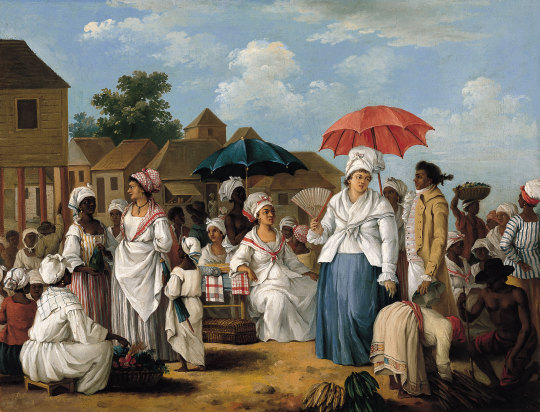


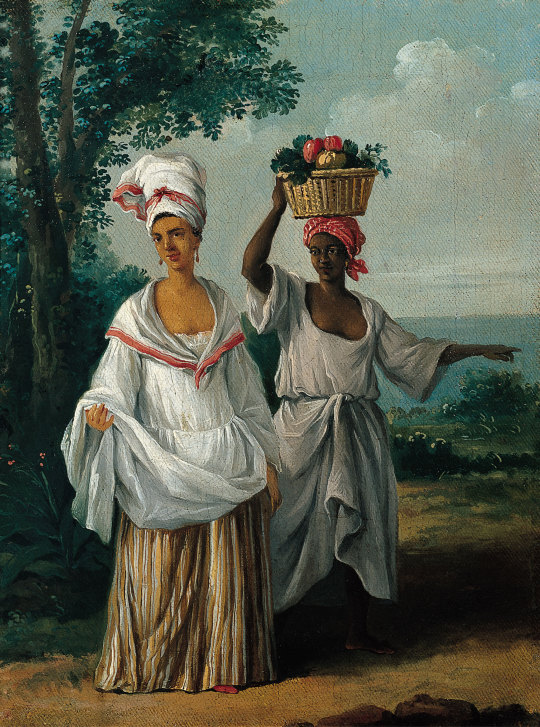
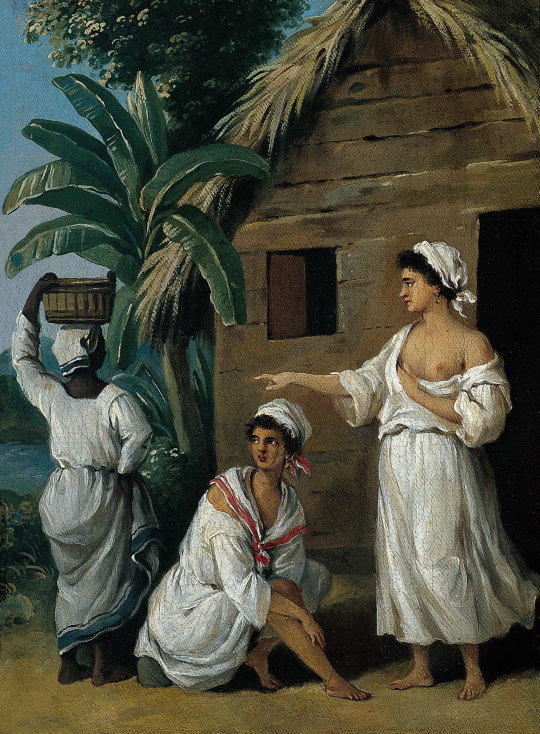
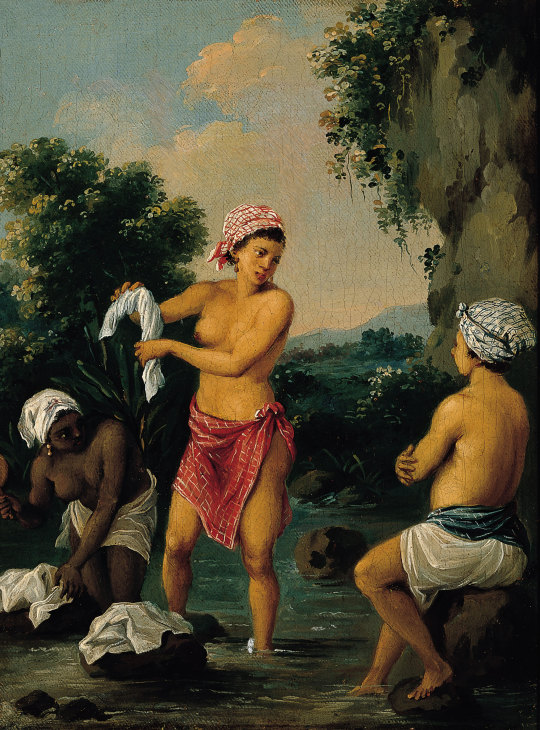
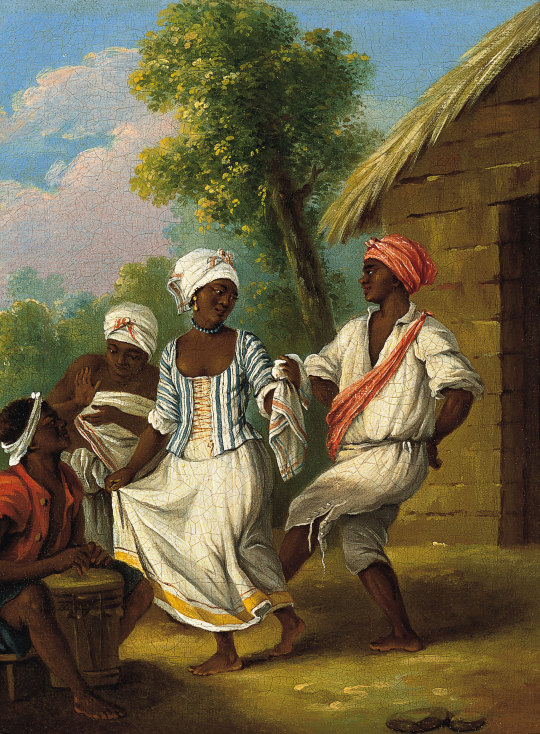
West Indian Paintings by Agostino Brunias (1730-1796) (Source)
While these paintings do not necessarily deal directly with colonial Saint-Domingue, they are still fascinating in view of the fact that they represent “typical” West Indian and Caribbean reality as understood by artists such as Agostino Brunias. Brunias travelled to various English West Indian colonies including Dominica and St. Vincent. His work is very interesting and clearly makes a (rather romanticized) commentary on the “racial” diversity of the Caribbean, which was of great curiosity for Europeans at that time.
It appears his work outlived him even in the eighteenth century, since even Saint-Domingue’s Toussaint Louverture was said to have been wearing reproductions of his paintings in his waistcoat buttons.
111 notes
·
View notes
Video
Stones in the Sun (trailer)
Stones in the Sun, a film by Haitian-American filmmaker Patricia Benoit, captures the essence of a reality not frequently shared on camera.
Inspired by her own family’s exile from Haiti, Benoit’s film takes place in the 1980s, revisiting the country during a nationwide uprising against then President (or dictator) Jean-Claude Duvalier. Known for his brutal militaristic tactics, under his authority, many Haitians were killed, tortured and fled the country looking for a safe-haven.
Three Haitian families all dealing with the same reality in various ways flee the country to land in New York, where they attempt to pick up the pieces.While all three had varying experiences, from rape and murder, to displacement and shame, they all unite on the same issue and that’s struggle.
During Q&A, Benoit regarded the film as another side of the Haitian story.
“One thing that irritates me is that when people talk about Haiti, they talk about the resistance,” she said. “But people forget that there is damage. There is damage and in order to survive, people hide the wounds and they push them down.”
Indeed her point was well taken. Each of the characters dealing with their connection to the suffering was haunted by the past, by the demons that crumbled their worlds.
In the film, sisters “Yannick” and “Micheline,” though raised in the same era, in the same household in Haiti, are worlds apart. Yannick, educated and given opportunity, stays in Haiti as a teacher to empower youth and enliven revolution. She witnesses a murder and flees to America to stay with her sister who has become the all-American woman, living in the suburbs in a nice house with the proverbial white picket fence.
Unable to cope with the reality of her homeland, the suffering of others and her horrific past, Micheline clashes with her sister who begins to rock her perfect world.
“Gerald” the son of an infamous military oppressor builds a new life in America, changes his name and fights over the airwaves with a revolutionary radio show, speaking of uprising and overthrowing the military. He marries a white woman, “Rebecca” who is completely unconscious of her husband’s internal battles. His father, deathly ill, escapes Haiti and comes to his doorstep. “Gerald” is forced to somehow reconcile his past with his present while continue to stand firm on his beliefs. via
click here to read the interview with the director, Partricia Benoit
622 notes
·
View notes
Photo

GET READY!!!! 14 JUIN 2014 SAK PASE PARIS GRANDE PREMIERE SECTION ZOUK CLUB ‼️‼️‼️🔥🔥🔥 ✈️✈️Apres #Haiti #NewYork #LasVegas #Miami Ils envahissent #Paris !! ✈️✈️ ✔️Guest #DjStakz #DjKss ✔️Teeshirts Goodies Bags ✔️HipHop Zouk Kompa DanceHall @teamdkent @teamdnalsi @teamhkny #coalition #bosslife #representtheculture #lifestyle #beinspired #2015
2 notes
·
View notes
Photo
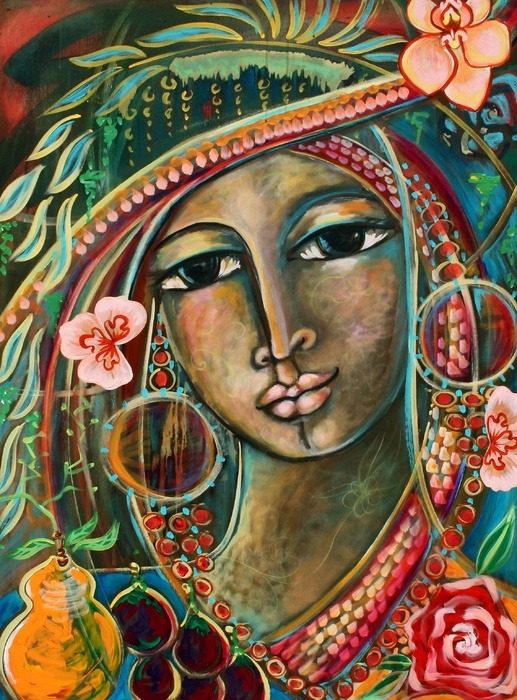


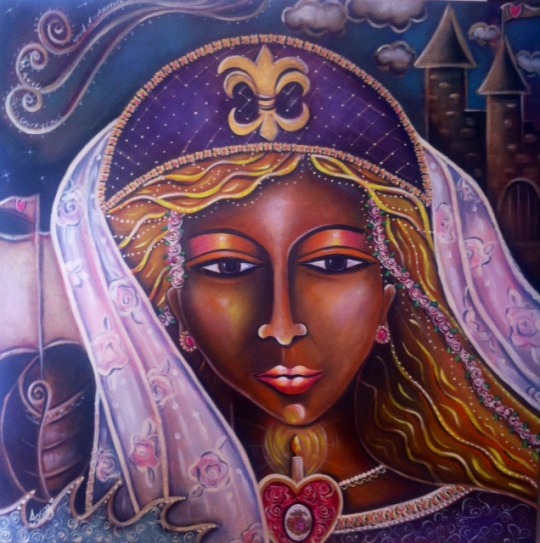
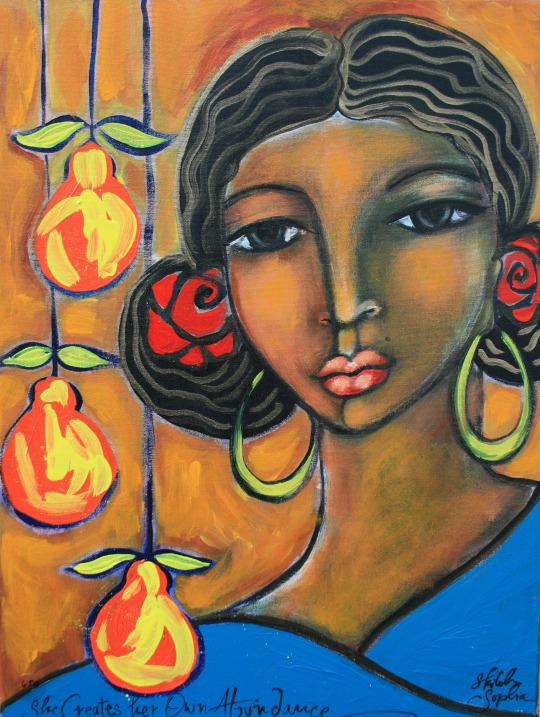
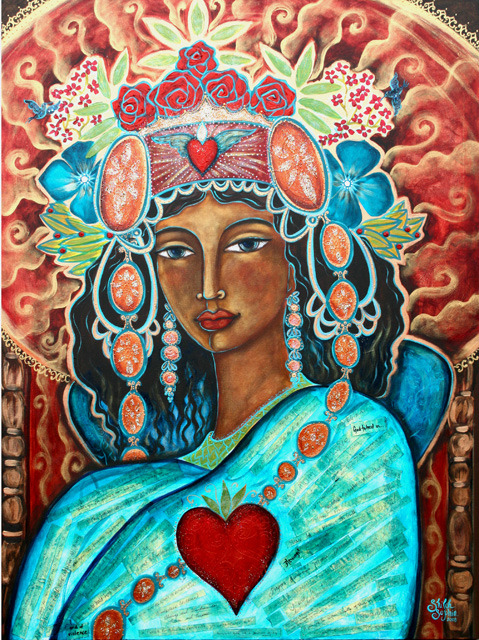
The art of Shiloh Sophia. These pieces display an exquisite beauty, reminiscent of Haitian art, but not. Her work is inspired by the Divine and the Symbolist Movement. Frida Khalo is also an influence.
20 notes
·
View notes
Link
Looks like dayiti has had a visitor. :)
4 notes
·
View notes
Photo

Caption reads: "Papa Loi [sic] ...priest of the Vodou Religion. #HHM
31 notes
·
View notes
